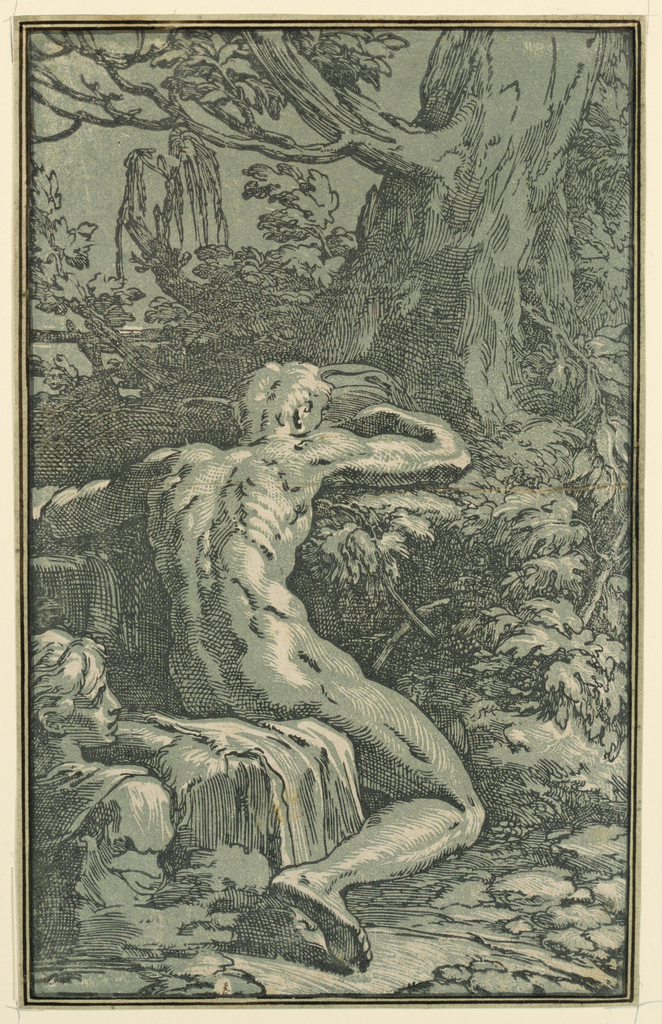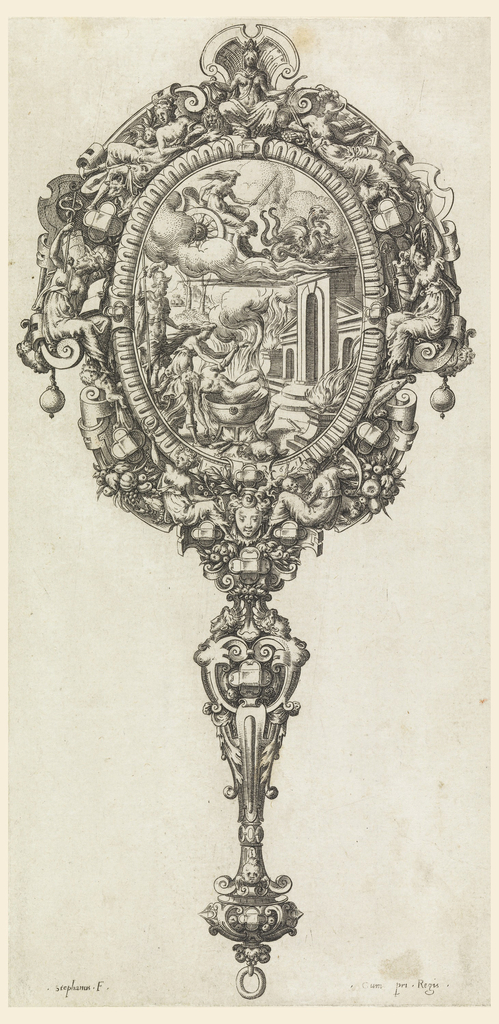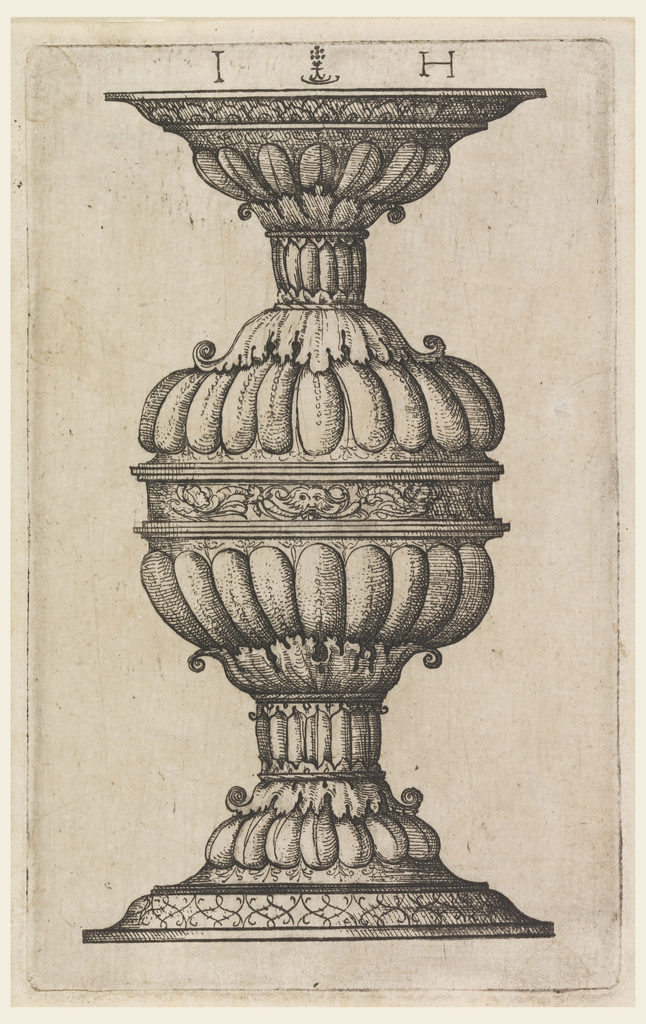In recognition of National Hispanic Heritage Month (September 15-October 15, 2019), this week’s Object Of The Day posts celebrate Latinx design and designers’ works in the collection. This rather ordinary looking band is actually extraordinary. Made in Mexico during the Spanish colonial period (likely mid-15th- early 16th c.) it is composed with a Spanish aesthetic,...
This print, with its striking green hue, is the result of an innovative collaboration between two Italian Renaissance artists. Working together in Bologna in the late 1520s, the painter Francesco Mazzola (called Parmigianino, 1503-1540) and the printmaker Antonio da Trento (1508-1550) were early adopters of a new technique that allowed for the production of multicolored...
Sixteenth-century Europe saw, with the apogee of humanism, the reactivation of intellectual and creative energies towards classical antiquity, through which the decorative arts flourished. Designs were highly imaginative, with increasingly complicated, fantastical motifs, in which material opulence coexisted with humanist knowledge in the form of historical and mythological themes.[1] A case in point is this...
In 16th century Germany, the popularity of Doppelpokal, better known as double goblets or cups, and the taste for elegant, classicized forms are reflected in this small print by Hieronymus Hopfer (German, active ca. 1520-1530). As the ancestors of wine glasses, double cups, which fit over each other at the rim, were intended for ceremonial...



